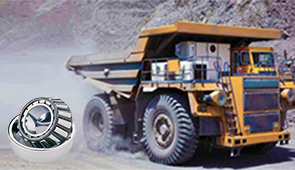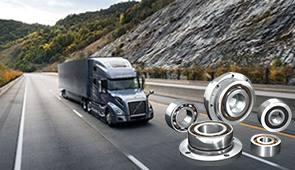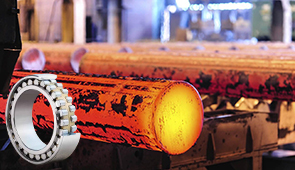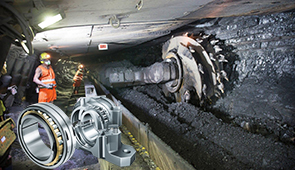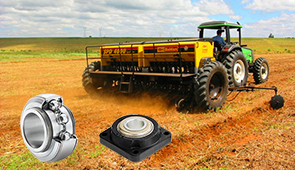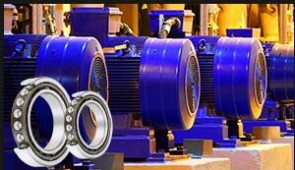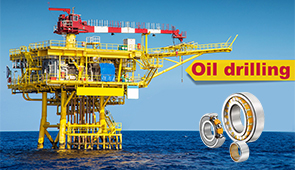Understanding Oil Seal Products: Types, Materials, and Specifications
Oil seals, also commonly known as rotary shaft seals, are ubiquitous components that go into quite a number of machines and systems and ensure efficiency and leak prevention. In cases of automotive engines, industrial plants, or hydraulic plants, the oil seals either make smooth running possible or bring downtime more expensive. This article discusses the world of oil seals, describing the different types, the materials from which they are made, and essential considerations to keep in view while selecting the appropriate seal for your needs. By this article’s end, you will have some clue as to how these seemingly simple machines came to exist to protect and enhance the life of really critical machinery.
Overview of Oil Seals
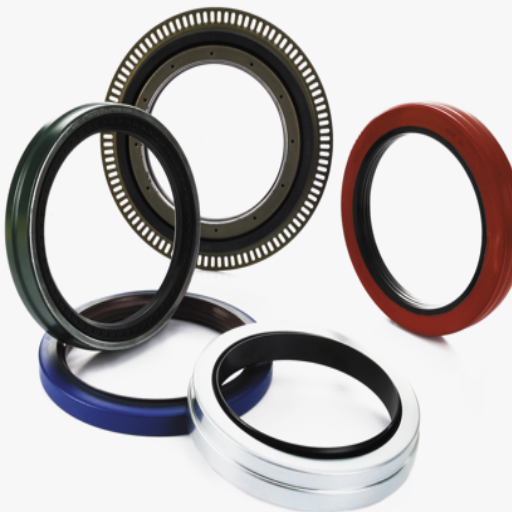
What is an Oil Seal?
An oil seal functions as an essential component to protect machinery and equipment by preventing lubricant leaks. It prevents the entry of harmful contaminants into the oil or grease held inside. Contaminants usually include dirt, dust, and water, among others, which can cause the internal components to be damaged. Some applications in which oil seals are used include automotive engines, gearboxes, and industrial machines.
Oil seals are usually made from a combination of materials that ensure durability and give the required performance under varying conditions. The principal elements of oil seals consist of a flexible sealing lip, a metal casing, and some have springs to continuously provide pressure against the shaft for proper sealing. The sealing lip is intended to provide a reliable seal to the rotating shaft, accommodating a small range of movement or misalignment without compromising its ability.
The seals help keep machines from wear and tear, thereby making them more efficient and extending their mechanical life. Factors such as temperature, pressure, shaft speed, and type of lubricant or fluid in the application are taken into account when choosing an oil seal. It is equally important to install and maintain oil seals well to enable them to perform with utmost efficiency and avoid expensive repairs and downtime.
Importance of Oil Seals in Machinery
Oil seals are a very important component in a machine, used to keep lubricants in while letting dust, dirt, or moisture out of the system. Specially constructed to build up the performance and reliability of mechanical systems, the oil seals ensure the smooth operation of moving parts without undue friction or wear. Thus, oil seals are essential for keeping the engines, gearboxes, and industrial machines airtight.
A main function of these seals is to reduce and prevent leakage. Even a little leak of lubricant or oil could reduce efficiency, draw more power, and eventually cause damage to machinery parts. By preventing any leakage between the stationary and moving parts, oil seals ensure that the machinery is working at maximum efficiency. This can never spare downtime that may cost more and thereby increase the lifespan of important components.
Oil seals help keep the working condition safe and clean for the environment. In preventing the leakage of hazardous substances such as industrial oils and lubricants, these seals help avoid accidents and allow the industries to meet environmental regulations. By keeping contaminants away, the oil seal allows machinery to perform cleanly and sustainably and hence is important to its performance and responsible functioning. Choosing, fitting, and maintaining the right oil seal will surely go a long way in enjoying these benefits in the long run.
Types of Oil Seals
Oil seals are available in a variety of types due to very varied applications and machinery. That being said, the radial lip seal-type is most commonly used; it has a flexible sealing lip that presses against a rotating shaft, thereby preventing leakage into the environment. Radial lip sealing finds a wide range of applications in industries and sectors, such as automotive and manufacturing, for its versatility and dependable performance.
Another seal type is the axial seal. It operates perpendicularly to the shaft in situations where radial seals cannot be used. Axial seals are usually found in equipment that requires very low speed or conversely very small clearances. They are capable of preventing the ingress of contaminants while retaining lubricants within the system.
To add to it, rotary seals, or rotary shaft seals, are special seals used in high-speed rotation applications. The selected seal will provide with durability and performance of high severity, such as high temperature, pressure, or chemical environment. It is the kind of environment in which an oil seal must perform, the machinery involved, and the sealing problems to be solved that would govern the selection of these seals, and correctly selected seals give you the benefit of efficiency and greater life of the equipment.
Materials Used in Oil Seal Products
Common Materials for Oil Seals
Oil seals are manufactured using a range of materials depending on compatibility with the operational environment and the fluids being sealed. These materials are mostly:
- Nitrile Rubber (NBR): Most widely used in oil seal manufacture, providing excellent resistance to wear, oil, and hydraulic fluids. NBR is an economical material and fits into general purpose applications, with temperature range suitability from -30°F to 250°F.
- Fluorocarbon Rubber (FKM/Viton): Known to have very high resistance against temperatures (upto 400°F) and chemicals, fuels, and oils. FKM finds its utility in automotive, aerospace, and industrial machinery where extreme conditions are involved.
- Polyacrylate (ACM): Mostly used where resistance to high temperatures and oxidation is needed. It operates satisfactorily from 0°F to 300°F, which makes it a popular choice for automotive transmissions.
- Silicone Rubber (VMQ): Understood to be highly elastic and resistant to very high and very low temperatures. Its sealing performance is very good in applications requiring low-temperature elasticity but is pretty poor against fuels and oils when compared to other elastomers.
- Polytetrafluoroethylene (PTFE): Very versatile and resistant to almost all Chemicals and extreme temperatures. PTFE seals are generally applied to aggressive industrial environments where other materials may fail.
Hence proper selection of the material for oil seals is a must to ensure good performance and longer life. These depend on temperature, chemical exposure, and operating pressure in the system. Good material coupled with excellent engineering will uphold the reliability of these important sealing components.
Advantages of Different Materials
- Nitrile Rubber (NBR): In general, nitrile rubber shows a high resistance to oils, hydrocarbons, and other chemicals and is a common choice for automotive and industrial applications. Temperature waivers under which this rubber could operate would be between -40°F and 250°F (-40°C and 120°C), during which periods it gave efficacy and durability in moderate conditions.
- Fluorocarbon Rubber: The FKM shows maximum resistance to temperature withstanding up to 400°F (204°C) and also resists most aggressive chemicals, including fuels and aggressive oils. Therefore, it enjoys premium applications in aerospace and automotive sectors due to the unique thermal stability and chemical resistance.
- Silicone Rubber: Its temperature range is one of the broadest in the industry, with temperatures being -103°F to 450°F (-75°C to 232°C). It works best in the extreme temperature variations where flexibility is required. It performs fairly well against weathering and ozone.
- Polytetrafluoroethylene (PTFE): PTFE has excellent chemical compatibility and is resistant to extreme temperatures: from -328°F to 500°F (-200°C to 260°C). This non-elastomeric material can resist wear under high pressure and aggressive chemical environmental conditions, being of low friction.
- Polyurethane (PU):Polyurethane sealing materials have high abrasion and tear resistance and are capable of withstanding high pressures. Their operating temperature range is -65°F to 200°F (-54°C to 93°C); the making of them is from hydraulic cylinders, which is used in heavy applications that require strength and durability.
Eco-friendly Materials in Seal Manufacturing
Moving toward sustainability, seal manufacturers have been tempted by green processes and materials. Another train of thought being pursued is the utilization of bio-based polymers from renewable resources such as vegetable oils, starch, and natural rubber. Such materials lessen the dependency upon fossil fuels, providing them with an eco-friendlier alternative, while retaining similar performance characteristics in durability and resistance. Also considered for the manufacture of seals are recycled materials, where raw materials are retrieved, reclaimed, and again manufactured into good-quality seals.
Likewise, water-based adhesives and lubricants are also gaining popularity, thereby replacing conventional solvent-based systems that form a layer of harmful VOCs. Losing pollution implies lesser adverse effects on nature; hence working places are made safe while manufacturing these products. To further contribute to the manufacturer’s green image, maximum energy saving techniques should be followed during production, such as low waste in all processes like molding.
On the other hand, material science, on advancement, allows seals to be biodegradable in nature, breaking down into natural compounds over time without becoming living pollutants. So these kinds of innovations answer the increasing industry and consumer demand for sustainable and green products-hence giving green materials top priority in the future of seal manufacturing.
Understanding Oil Seal Specifications
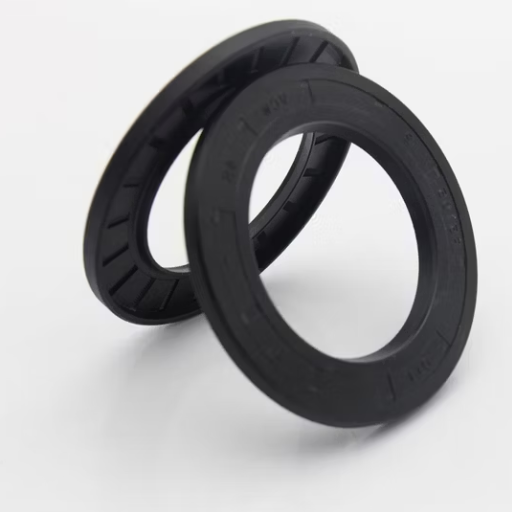
Key Specifications for Oil Seals
Oil seals, commonly called rotary shaft seals, prevent lubricants from leaking out into surroundings or moisture and contaminants from entering mechanical systems. Hence, the key specifications that determine their performance must be grasped with respect to their effectiveness:
- Material Composition: Oil seals can be materials of any type, and their characteristics weigh heavily upon their durability together with proper performance under operating environments. The common materials include nitrile rubber (NBR), fluorocarbon rubber (Viton/FKM), and silicone. Their selection is basically made on availability of heat, chemical resistance, and wear resistance.
- Temperature Range: Oil seals can maintain their integrity under permissible temperature ranges. For example, those manufactured from NBR are typically permitted for any temperature ranging between -30°C to 250°F (-34°C to 121°C) and those that are fluorocarbon are rated for temperatures up to 400°F (204°C).
- Pressure Capacity:The other specifications and conditions under which seals can provide effective service is of paramount importance. Also, the so-called high-pressure oil seals are those that are designed to withstand elevated pressures in conjunction with their pumping materials and other reinforcements, such pressures usually arise, for example, in hydraulic systems.
- Shaft Size and Bore Compatibility: In order for a seal to fit well and seal well, exact measurements of the shaft diameter, bore diameter, and seal width must be in place. When small dimensional differences enter or exit the nominal dimensions, seal life and sealing performance deteriorate very fast.
- Speed Rating: Nominal shaft speed in RPM, or rotational speed, exerts major influence on the behavior of sealing elements. The higher speeds lead to increased friction and heat which requires materials such as FKM that can resist such conditions.
- Lip Design and Sealing Mechanism:While the lips of the oil seal provide the actual sealing action, single-lip, double-lip, or spring-loaded designs are chosen in accordance with what is expected to be done, such as keeping contaminants out or holding in lubricants.
By knowing the prescriptive forces together with operational demands, the designers and companies select the oil seals that are just right for their systems so that it may live forever and work productively under varied conditions.
How to Choose the Right Size and Fit
The proper sizing and fitting of oil seals is paramount for the performance of the seal itself and also for avoiding failures that may arise within the system. Always begin establishing the shaft diameter, bore diameter, and seal thickness, as these parameters are fundamental in giving that proper fit. The measurement taken for these components must be exact, and calipers should be used; otherwise, the seal would go askew and leak.
On the other hand, regarding the materials, sizing and compatibility are always to be considered; this would consider operating conditions of temperature, pressure, and fluid-to-seal contact. Nitrile rubber seals provide optimal performance in applications where temperature remains fairly constant and the oils are standard types. Intermediate application ranges can better use fluorocarbon in an environment where either higher temperatures or aggressive chemical attack may be involved.
Tolerance is yet another key factor. The oil seal should fit snugly against the mating part while still retaining enough flexibility to perform. Consult technical manuals or catalogs from several reputed manufacturers for exact tolerances in your application.
More to the point, your own choice of oil seal should depend on accuracy in measurement and choice of materials; thus, an engineer would provide the fine data to allow you to select an oil seal of utmost quality that would protect system reliability and reduce wear and tear.
Applications of Oil Seals Across Industries
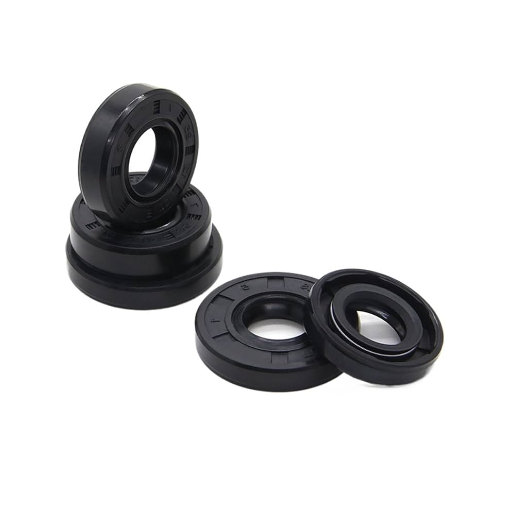
Automotive Applications of Oil Seals
Oil sealing elements are manufactured for rotary shafts of automotive engines, transmissions, gearboxes, axles, etc., to prevent lubricant leakage into the environment and to prevent contaminant entry that might deteriorate performance. For instance, in an automobile engine, oil seals are placed to retain engine oil within the engine while allowing smooth rotation of the crankshaft and camshaft. This keeps the engine running at full capacity and prevents its vital components from wearing excessively.
Another application is automotive transmission. Oil seals maintain the integrityway of transmission fluids which are necessary for proper gear operation and heat dissipation. In this manner, by avoiding the leakage of fluids from the system, the seals enable power to be transferred satisfactorily from the engine to the wheels with ease, thus ensuring smooth driving. Furthermore, while oil seals assist in handling the complex hydraulic systems controlling shifting mechanisms in advanced automatic transmission, it best illustrates their utility in present-day vehicles.
An interest of mine is in aviation and aerospace seals, whose understanding showcases how oil seals extend the life and reliability of cars. Choosing good quality seals meant specifically for certain automotive conditions represents a win-win scenario for manufacturers and vehicle owners since they assure better functioning, less repairs, and ultimately a better driving experience.
Oil Seals in Industrial Machinery
Oil seals are prime candidates for playing a vital exercise in assuring the smooth functioning of industries and extending machinery life. These seals are also employed to ensure that lubricants do not leak while contaminants like dust, dirt, and water are barred from entering into internal assembles that are damaging to the components. When placed against friction, oil seals create a barrier, so they, in essence, reduce the rate of wear on machinery, thus promoting its efficiency and performance.
With modern industrial practices, components have to satisfy extreme operating requirements such as high temperatures, pressure, and friction. Advanced oil seals use materials such as synthetic rubber, fluoropolymers, or PTFE that in conjunction with precision engineering attempts to satisfy these extreme requirements. Manufacturing, agriculture, mining, and energy industries depend on the seal to reduce downtime and in repair costs, guaranteeing uninterrupted production.
Advances in oil seal technologies have resulted in seals that offer better temperature resistance, enhanced sealing ability, and lower friction coefficients. Double-lip and labyrinth seals, for example, are finding increasing application in solving rather complicated sealing problems. When installed and maintained properly, oil seals considerably prolong the working life of machinery, minimize operating expenses, and encourage sustainable industrial practices through energy efficiency as well as waste reduction.
Oil Seals in Manufacturing Processes
The installation of oil seals is essential in the manufacture of machines, ensuring their efficiency while functioning, which may become impaired when the leakage of lubricants or the intrusion of contaminants takes place. Industries ranging from automotive, aerospace, chemical processing, and heavy machinery manufacturing have applications for oil seals. Proper sealing lessens friction between moving members, decreases energy consumption, and enhances mending properties so that profitability and efficiency of work may be considered.
With these advances in materials and designs of oil seals, ever-increasing demands in modern manufacturing processes can be better met. For instance, fluoropolymer elastomer-based and high-temperature-resistant composite seals are accepted in industries subjected to severe uses. Spring-energized seals, rotary seals, and other innovative designs confront new challenges in applications requiring performance in a dynamic mode and prolonged maintenance-free life.
The downtime for maintenance could be lessened by 30% with oil seals that are high-grade, then production line work will proceed more smoothly, using industry data. Automation in sealing technology would guarantee that every calcification performs to its required operational standards and with precision assembly and quality testing, thereby mitigating the risk of seal failure. Using advanced sealing technology in manufacturing, both sustainability and profitability in manufacturing would improve simultaneously.
Installation and Maintenance of Oil Seals
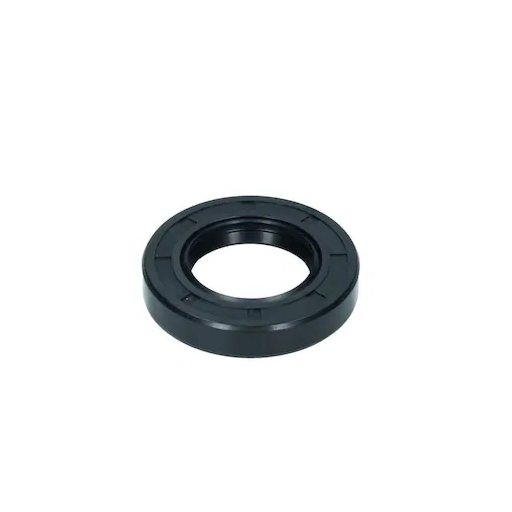
Tips for Proper Installation
Oil seal maintenance is critical to their performance and durability; it greatly reduces the chances of a premature failure. Seals must be kept in clean unpolluted conditions. Dirt, debris, and foreign materials impede sealing surfaces and can potentially cause abrasions and the torqueing of leakage or other malfunctions. Regular cleaning of seals and their associated components is protocol under industry-recommended methods-for-mitigating such risks. Furthermore, compatibility of lubricants and ensuring the oil seal does not become overly exposed to harsh chemicals contribute in prolonging the life of oil seals.
Now, routine inspections may be considered life builders for an oil seal. A willingness to check for wear such as cracking, abrasion, swelling, or loss of elasticity should be present during the inspection procedure. Any irregularities on seal housing or shaft surfaces should also be trailed to reconciliation without delay, for uneven or damaged surfaces provide an opportunity for seal failures to occur. Certainly, seals should be replaced before they reach a highly critical stage of deterioration to save from costly downtime for repairs and production interruptions. Another point in favor of frequent checks is maintaining the alignment and tightness of these seals to ensure they are not subjected to unnecessary stresses during operation.
The ever-evolving trends in predictive maintenance technologies bring about promising advanced methods to protect oil seals. For example, condition monitoring systems can observe the temperature, pressure, and vibration levels around an oil seal in real time. Such systems may help in identifying suspicious patterns that are an indication of the imminent failure of oil seals so that they may be preemptively addressed. The amalgamation of these technologies with stringent maintenance schedules may considerably improve machinery operational reliability and efficiency. Maintenance kept on a proactive footing helps manufacturers and operators to enhance the lifespan of oil seals and protect great investments in capital equipment.
Maintenance Advice for Longevity
Depending on their operation and durability, oil seals may be subjected to improper maintenance, which may bring on premature failure. The environment in and around the seals must ideally be kept clean and contamination-free. Dirt, debris, or foreign material may get between the sealing surfaces, causing abrasions to occur and leading to issues such as seal leakage or malfunctioning of the system. Consequent regular cleaning of the seal and surroundings as per recommended instructions will prevent such occurrence. Also, avoiding inappropriate lubricants and excessive exposure to harsh chemicals will increase oil seal life.
Regular inspections contribute to the efficient working and maintenance of oil sealage. During inspections, signs of wear, such as cracking, abrasion, swelling, or loss of elasticity, are examined. Lastly, abnormal defects in the seal housing or shaft surface must be repaired or removed immediately, as uneven or damaged surfaces may lead to seal failure. By replacing the seals before their condition becomes irretrievably bad, repair downtime with costly expenses and interruptions in production can be avoided. Frequent checks of proper alignment and tightness are also made to ensure that the seals do not undergo undue stress during operation.
Emerging trends in predictive maintenance bring advanced methods to protect oil seals. For instance, if a condition monitoring system is integrated, it might monitor the temperature, pressure, and vibration levels around seals in real time. These systems can assist in spotting abnormal patterns that could signal likely seal failures, allowing for timely corrective action. Apart from employing these technologies, if strict maintenance regimes are also diligently followed, then the machinery becomes highly reliable and efficient. Hence, operating and manufacturing entities favor a proactive maintenance approach toward oil seal specification, thereby increasing the life of their oil seals with hopes to protect more critical equipment investments.
Frequently Asked Questions (FAQ)
Q: What are oil seal products and their principal applications?
A: Oil seal products are intended to seal the gaps between moving and stationary parts to prevent the leakage of fluids, such as oil and grease. They find wide application in various industries like the automotive industry, agriculture, and industrial applications. Oil seals are applied to seal rotating shafts so that the lubricant remains within and contaminants remain without.
Q: What are the commonly used materials to make oil seals?
A: Usually, rubber compounds like nitrile, EPDM, and Viton are used to make oil seal products. Every material has a different attribute, some of which are temperature resistance and chemical resistance, all of which make them appropriate for different applications. For example, nitrile oil seals are generally used for petroleum-based lubricants, while EPDM is suitable for water and steam applications.
Q: How does one arrive at a proper size of an oil seal?
An oil seal to be fitted must have its proper size determined by measuring the diameter of the shaft and the outer diameter of the housing where the seal is to be installed. It is very important that the seal fits appropriately to prevent leakage.
Q: What are the differences between single lip and double lip oil seals?
A: Single lip oil seals have a single sealing lip, whereas double lip oil seals have two sealing lips. The double lip configuration offers better protection against contamination and retention of lubricants, hence suitable for applications where a higher sealing efficiency is required.
Q: What are backup rings, and how do they connect with oil seals?
A: Backup rings are employed together with oil seals to support and prevent the extrusion of the sealing lip when under high pressure. They are especially beneficial when dynamic activity is concerned, while the oil seal is subjected to high pressures and friction. The use of backup rings increases the life and performance of oil seal products.
Q: Can one use oil seals in hydraulic systems?
A: Yes, oil seals are commonly used in hydraulic systems to ensure efficient sealing of hydraulic fluids. They are designed to work against high pressure to seal leakage reliably, thus providing optimal performance to hydraulic equipment. One must select the right oil seal product for use in hydraulics so as to uphold the integrity of the system.
UCTH213-40J-300 with Setscrew(inch)
CNSORDERNO: Normal-duty(2)
TOGN: UCTH213-40J-300
SDI: B-R1/8
SD: 2 1/2
UCTH212-39J-300 with Setscrew(inch)
CNSORDERNO: Normal-duty(2)
TOGN: UCTH212-39J-300
SDI: B-R1/8
SD: 2 7/16
UCTH212-38J-300 with Setscrew(inch)
CNSORDERNO: Normal-duty(2)
TOGN: UCTH212-38J-300
SDI: B-R1/8
SD: 2 3/8
UCTH212-36J-300 with Setscrew(inch)
CNSORDERNO: Normal-duty(2)
TOGN: UCTH212-36J-300
SDI: B-R1/8
SD: 2 1/4
UCTH211-35J-300 with Setscrew(inch)
CNSORDERNO: Normal-duty(2)
TOGN: UCTH211-35J-300
SDI: B-R1/8
SD: 2 3/16
UCTH211-34J-300 with Setscrew(inch)
CNSORDERNO: Normal-duty(2)
TOGN: UCTH211-34J-300
SDI: B-R1/8
SD: 2 1/8









